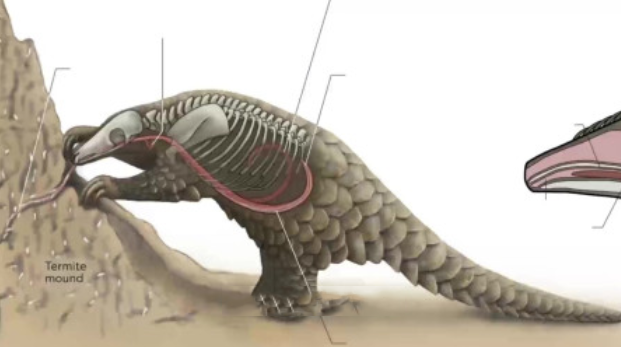The pangolin is a killer of ants, it has a long, slippery tongue that is a nightmare for ants once it gets into the nest, and the marching ant is a carnivorous ant that is known to be a "Man-eater", so it must be very exciting when these two animals meet. Can a pangolin take on a group of marching ants? Let's have a chat about this interesting question.
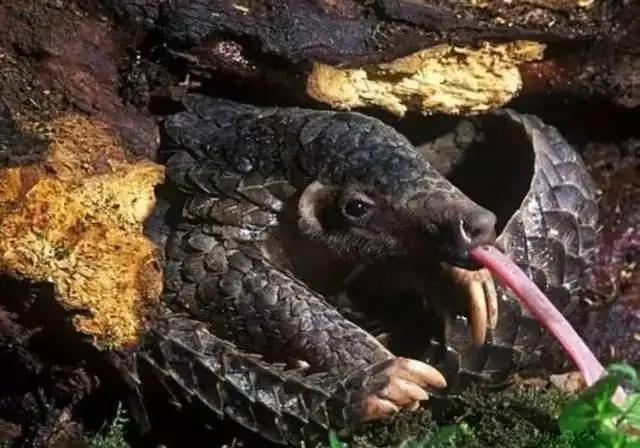
Firstly, a brief introduction to marching ants
When i was a child, i read a little book called 'the battle of the ants', which described a battle between ants and humans in the south american amazon. It was only when the workers opened the valve of the drainage ditch and flooded the farm that the colony was repelled.

I remember that reading this little book as a child gave me a deep fear of ants and i always wanted to find out what kind of ants they were and how powerful they were. Only, that little book was a fabrication, and the real marching ants, although strong, were nowhere near as terrifying as the little book made them out to be.
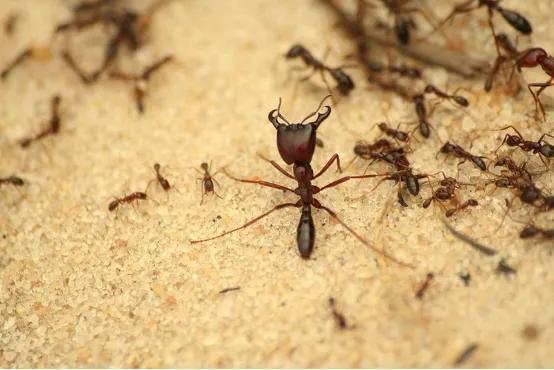
The marching ant, also known as the legionary ant, is, in a broad sense, a collective name for a wide variety of ants under the true ant family, all of which share two characteristics: Never nesting and moving in swarms almost constantly. However, in a narrower sense, the term marching ants refers to the bristlecone wandering ant, as it is one of the many marching ants that have been most studied by scientists, so we will talk about the bristlecone wandering ant below.

The bush wandering ant
It is a species of ant in the genus brachionus, which would be the main character in the little people book. The brachionus is a species of ant unique to the south american rainforests, mainly found in the rainforests on both sides of the amazon river. Like other marching ants, it does not build nests and spends almost its entire life in battle, with hundreds of thousands or millions of ants in a colony.
In normal times, a large bristlecone swimmer colony can form a safari of up to 20 metres long and 2 metres wide, which is quite terrifying. The key thing is that the soldier ants of the bristlecone swimmer have a pair of very large jaws which can easily pierce our skin, so the indigenous people along the amazon river would grab a bristlecone swimmer when injured to bite at the wound and then rip its body off, thus making it a natural stitch.

During the march, the bristlecone wandering ant will attack anything living, especially arthropods, large or small, and once entangled in them, they will soon be gnawed away. However, like other marching ants the bristlecone wandering ant usually rests at night, except that when it does, the bristlecone wandering ant prefers to rest en masse on the trunk of a tree before setting off again the next morning to march east.
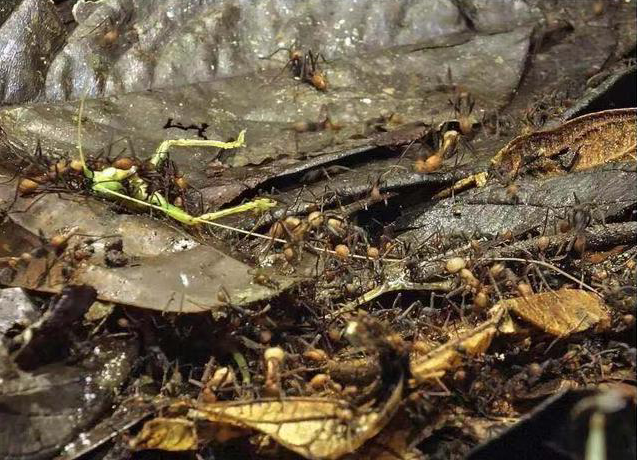
Let's look at the pangolins again
Pangolins are a group of mammals that are good at digging holes. They get their name from their habit of digging holes, but they don't really go through mountains, they are just good at digging in softer soil and dig faster, on average they dig 5-10 metres a day.
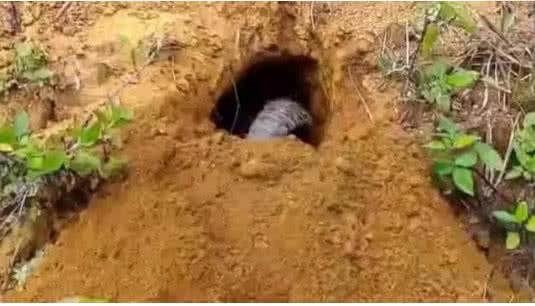
The pangolin is covered in hard scales, and this is the origin of its name "A". In ancient times, the ancients saw that the pangolin was good at making holes, so they thought it had a good lactation effect, and so it became a "Natural medicine" In people's eyes.
Although today's medicine is very advanced and scientists have confirmed that its scales are in fact like our toenails, keratinous and without any special ingredients, some people are still convinced of its "Medicinal effects", which has led to the illegal smuggling of pangolin for a long time in quantities of at least 100,000 per year. This has led to the illegal smuggling of pangolins at least 100,000 per year for a long time.
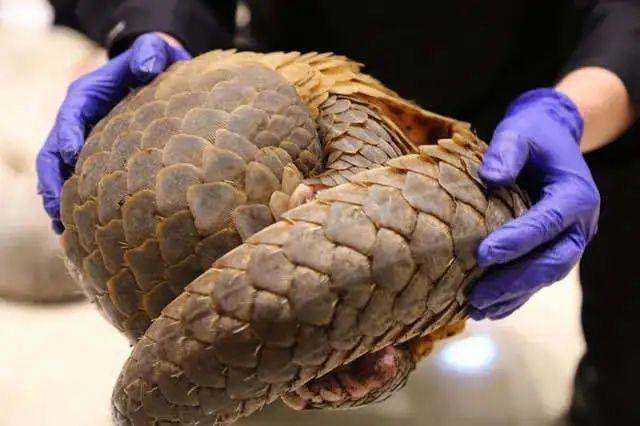
Although the route of pangolin smuggling is convoluted, more than 95% of the pangolins end up in china, as they have not been farmed in captivity to date, and there is only one species of wild pangolin in china, with the remaining seven species found in africa, india and parts of south east asia.
Because of the high demand for pangolin in china, the chinese pangolin, which is distributed in china, has borne the brunt of becoming an endangered species. The remaining seven species, too, are either endangered or vulnerable due to excessive hunting, so we should still have a proper understanding of pangolin and not follow blindly to protect these endangered species.
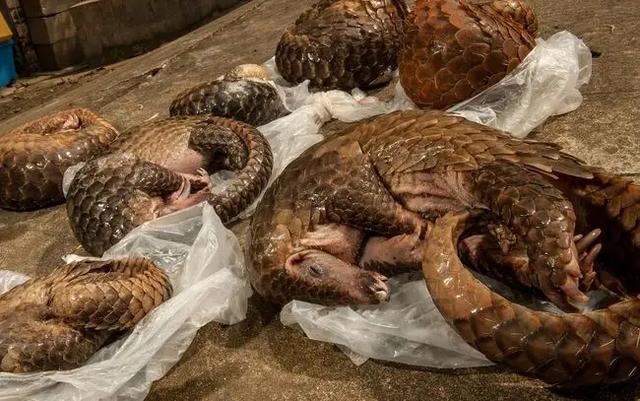
The adult pangolin averages between 30-100cm in length and is one of the few land mammals without teeth, making them only able to feed on ants, although its long, slender muzzle combined with a long, slender tongue that is nearly half its body length makes hunting ants a simple task. This long tongue is only about 0.5cm in diameter and can be extended almost all the way into the stomach.
Although pangolins mainly feed on ants, their favourite species is the termite (technically not an ant, it is a member of the same order as the cockroach). According to statistics, one adult pangolin can destroy 70 million termites in a year, so in nature, pangolins are extremely useful in suppressing the termite population.

Can a pangolin fight off a swarm of marching ants?
In terms of natural distribution, the pangolin is only found in asia and africa, while the marching ants (bryozoa) are only found in south america, so there is no chance of the two meeting. However, if they do meet, the pangolin is not necessarily a match for the marching ant, but the marching ant can't take the pangolin either, so why is that? Let's look at two aspects.
Firstly, it is very difficult for a pangolin to eat a marching ant. Although the pangolin is the nemesis of ants, the ants it hunts are actually not very aggressive. Let's take the termite, a close relative of the cockroach, as an example. The threat to humans from termites is mainly in the destruction of dwellings and furniture, and there is no threat to the safety of people themselves, this is because termites have neither the poison sacs like red fire ants nor the large jaws like marching ants.

Although their jaws are unlikely to bite through the scales of a pangolin, if the pangolin wants to eat them, it must use its tongue, which is less than 0.5m in diameter, but is very soft and once bitten by the jaws it is a penetrating wound.
When a pangolin licks a group of marching ants with its tongue, they bite down together and the tongue is riddled with holes, although the pangolin can send its tongue into its stomach where the gastric juices will quickly envelop the marching ants, but damage is inevitable, so the pangolin cannot deal with a group of marching ants.
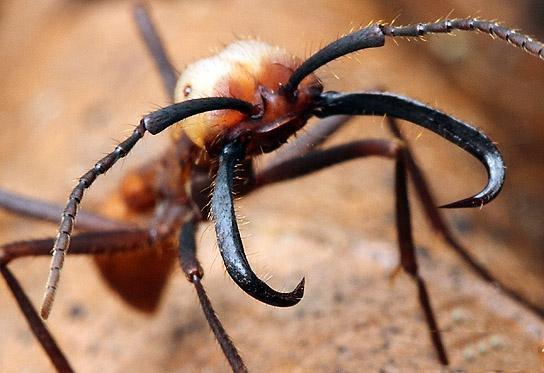
Second: Marching ants also pose little threat to the pangolin. In fact, the power of the marching ants is over-exaggerated. If given a motionless horse, they can indeed take some time to bite it, but horses are not stupid and when the first bite is taken and they feel the pain, the horse will flee.
The same is true of the pangolin, when it licks a marching ant and is bitten on the tongue, its first reaction is to retrieve the tongue, at which point the armour of the pangolin acts as a good defence.
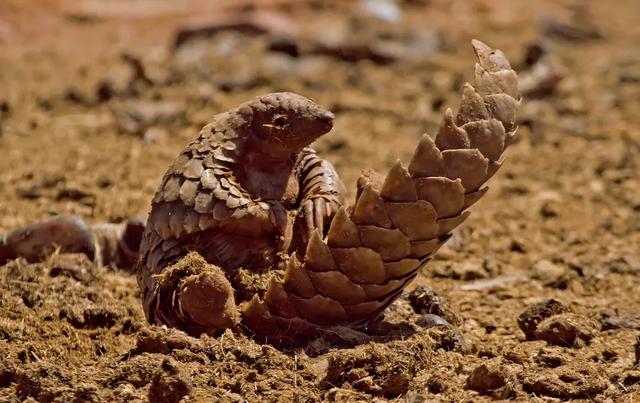
Secondly, although the marching ant is tough, it has one hard fault and that is that it is too slow to run. Due to its small size, the marching ant can only run at a speed of about 20mph, which is slower than the sloth's speed, as the sloth's "Running" Speed on land is still 10mph, while the pangolin's running speed is much faster than the sloth's, reaching 25km/h at the fastest.
At this speed, if the pangolin tries to escape, the army of marching ants cannot even see the pangolin's 'tail lights', let alone attack and take it down (ps: Pangolins are bipedal animals).

They are only a threat to small, slow-moving arthropods, but not to those that can fly or run (even sloths can leave them behind), and although the pangolin is the ant's nemesis, its long, thin tongue is only a threat to less aggressive ants, but not to the marching ants.
The pangolin is therefore unable to fight off a group of marching ants, but if it wanted to, a million of them would not be able to stop it.


